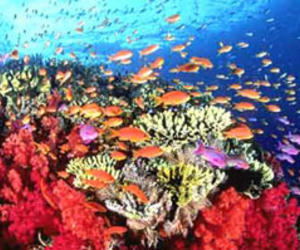1200 new marine species identified
- Submitted by: manso
- Society
- 10 / 11 / 2010

After ten years of research, a team of scientists announced in London the largest global study of marine species that contributed 1200 new species of a total of 250 000 classified.
Known as the first Census of Marine Life will, it will help to determine how human activity is affecting areas previously unexplored of ecosystems under the sea floor.
The study, the most comprehensive of its kind, involved more than 2.700 researchers from 80 countries, conducted 540 expeditions in 9000 days at sea.
This international collaborative effort on this 21st century style trip has been defined systematically and for the first time the hitherto known and the unknown spectrum of vast oceans, said Ian Poiner, chief organizer of the census.
Poiner recalled that the marine life provides half of the oxygen and much of the food consumed by the world's population, and also regulates the climate. Although it is estimated that a large part of the marine habitat is unknown, including at least 750 000 undiscovered marine species, we have better knowledge of marine life, said the expert.
At a cost of about $ 650 million, the study involved some 760 institutions and was initiated in 2000 with the aim of answering three key questions: What lived, live and will live in the oceans?
The census covered 17 research projects, which included from studies on coral reefs to mountain ranges from the depths of the Atlantic.
Even after a decade of exploration of the planet's marine habitats, it is possible to have reliable estimates of the total number of species, the scientists concluded.
However, the researchers identified 6000 potential new species, of which 1.200 have been cataloged.
Species and migratory routes were classified by remote sensing, monitoring techniques and deep-sea robotic vehicles, among others. The use of DNA techniques also allowed the scientists to have access to data that otherwise would not have been obtained.
Many technologies used in the census could be part of regular monitoring of the oceans led to know with certainty what happens to marine life, said Professor Ron O'Dor, one of the scientists involved.
Another of the researchers, Professor Paul Snelgrove, noted that although the first Census of Marine Life completed its task, and said they still know more than the surface of the moon than the bottom of the oceans, which remain outside the scope of technology satellite.
By Miriam Zito
Cubasi Translation Staff
Comments